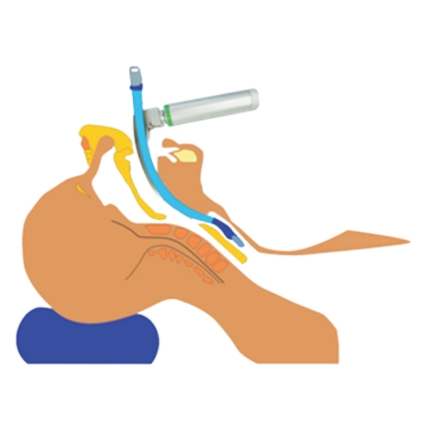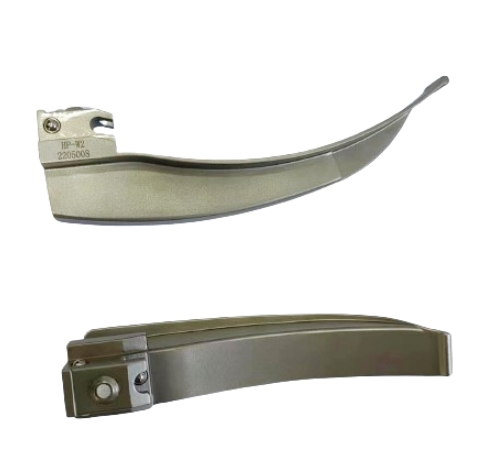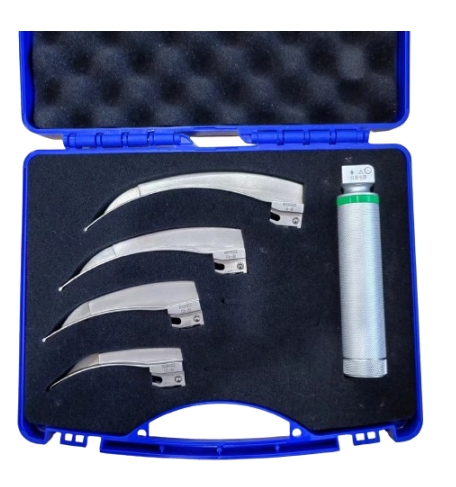The F.O. laryngoscope set is an essential tool utilized in clinical settings for the purpose of performing endotracheal intubation. This versatile equipment is particularly valuable in various medical disciplines, including anesthesiology, emergency medicine, intensive care units (ICUs), and ambulance services, among others. The set is thoughtfully designed to include a total of six reusable blades, which consist of four Mac blades specifically intended for adult patients and two Miller blades tailored for pediatric endotracheal intubation. Haiye provides fiberoptic laryngoscope. This comprehensive selection of blades ensures that the intubation needs of all patient demographics are effectively met, providing healthcare professionals with the necessary resources to deliver optimal care in critical situations.
Using a traditional fiber optic laryngoscope set requires careful preparation and technique to ensure patient safety and effectiveness. Here’s a step-by-step guide of fiber optic laryngoscope set:
1:Gather Equipment:
Fiber optic laryngoscope
Appropriate size endotracheal tube (ETT)
Oxygen source
Suction device
Anesthesia equipment (if necessary)
Gloves and other personal protective equipment (PPE)
2:Patient Preparation:
Explain the procedure to the patient.
Position the patient appropriately, usually in the supine position with the head slightly elevated.
Ensure that the patient is properly sedated or anesthetized, if necessary.
3:Check Equipment:
Inspect the fiber optic laryngoscope for any damage.
Ensure the light source is functioning and the fiber optic cable is connected properly.
Verify that the ETT is ready and appropriately sized.
1. Insert the Laryngoscope:
Lubricate the tip of the laryngoscope if necessary (avoid using petroleum-based lubricants).
Hold the laryngoscope in your dominant hand, using a pen grasp.
Insert the tip of the laryngoscope into the patient’s mouth, displacing the tongue to the left.
2. View the Vocal Cords:
Gradually advance the laryngoscope while keeping the light source aimed toward the posterior pharynx.
Use gentle manipulation to achieve a clear view of the vocal cords. Adjust the angle of the scope as needed.
3. Intubation:
Once the vocal cords are visualized, take the ETT in your other hand.
Insert the ETT through the vocal cords, advancing it into the trachea. Ensure you see the cords before advancing.
Confirm the correct placement of the ETT by observing equal breath sounds and using capnography if available.
4. Secure the ETT:
Once in place, inflate the cuff (if applicable) and secure the ETT with tape or a commercial device.
Ensure the ETT is not too deep, as this could lead to right mainstem intubation.
5. Post-Procedure Care:
Monitor the patient's vital signs and oxygen saturation.
Provide appropriate ventilatory support as needed.

Discover the Unmatched Advantages of Choosing Haiye for Your Fiberoptic Laryngoscopes:
Uncompromising Durability: Crafted from medical-grade 304 stainless steel, our laryngoscopes guarantee exceptional quality for all your anesthesia intubation needs.
Ergonomic Excellence: Our handle features a secure grip design, ensuring a slip-resistant experience for operators, even in the most demanding situations.
Effortless Cleaning: The fibers of our rigid laryngoscope are fully encased within the reusable blades, eliminating hard-to-reach areas and ensuring thorough disinfection every time.
Brilliant Illumination: Equipped with a powerful LED light boasting 500 lux illuminance, our laryngoscope promises an extended lifespan, enhancing your operational efficiency.
Cost-Effective Choice: Compared to video laryngoscopes, our fiberoptic laryngoscopes offer an economical solution for anesthetists working within a budget, without compromising on quality.

